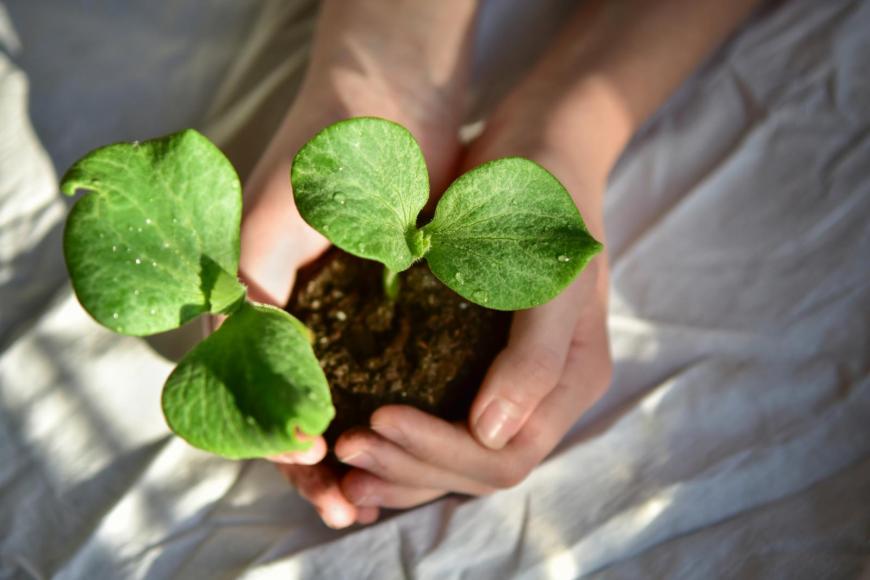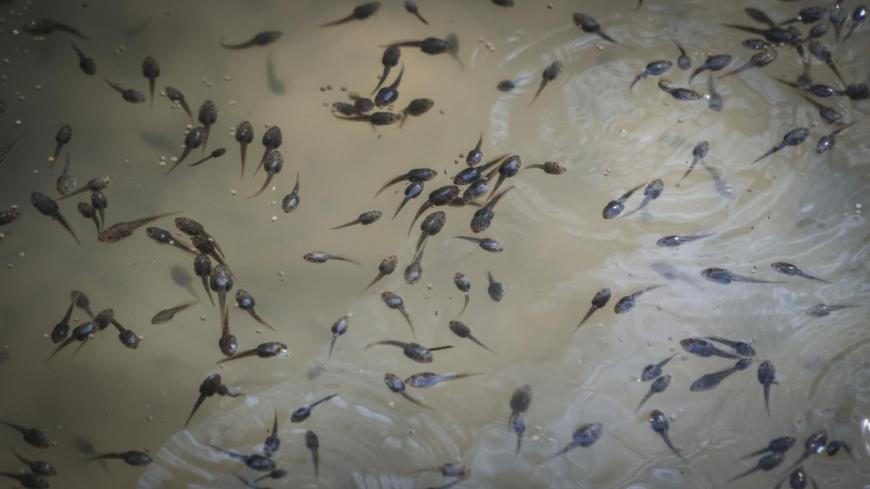
Summer is in sight. The scent of cherry blossom carries on the breeze and the gorgeous pink of the crab apple is coming through. Tulips in an array of bold colours brighten up the garden and peonies, irises and poppies are set to make their entrance in the borders.
After April’s frosty mornings, it’s finally warm enough in most parts of the UK to get everything planted out into the garden. Make sure to acclimatise plants to the outdoors by hardening them off first. Put them out during the day and bring them back undercover at night-time for a few days before planting them out into their final growing positions.
April was such a dry month and we’ve been grateful for the much-needed spring showers that May has finally brought along. It’s a good reminder to get prepared for warm, dry periods. Now that we have some rain, check that your rainwater butts are working and if you haven’t already, start applying organic mulches to the ground to help keep moisture in. Do make sure the ground has had a thorough soaking before applying the mulch. Containers and baskets are particularly prone to drying out in warm spells so it’s a good idea to use some straw or another type of mulch on the soil surface. Mulching also helps keep the ground weed-free between crops.
May is one of my favourite months in the kitchen garden. The first new harvests begin with lettuce, rocket and early broad beans. The tomatoes are getting taller and are ready to be potted on and there are lots of seeds to sow both indoors and out. Don’t worry if you’re just getting started, there’s plenty of time to sow vegetables for this season. After the cool nighttime temperatures of April, the season has been a little slow to get going this year.

Courgettes, pumpkin and squashes can be sown indoors this month, ready to be planted out in June. Growing them to a good size indoors and hardening them off before planting will help give them some resilience to slugs and snails. Continue sowing maincrop peas, mange tout and sugar snaps outdoors. Climbing beans and runner beans can also be sown outdoors now providing the soil has warmed up. To protect young bean plants, an old plastic drinks bottle with the bottom cut off and the lid removed makes an effective cloche.
Continue sowing leafy greens (including chard, spinach and oriental leaves) in beds outside and sow salad leaves little and often for a succession of leaves over the coming months. There are some lovely salads to choose from. I’m a big fan of rocket so I grow plenty of that and my children love corn salad (lambs lettuce). For a spicy hit, try growing some red giant mustard, an impressive plant that does grow quite large or some purple frills mustard with their delicate frilly leaves. All herbs can be sown directly outside in the ground now, apart from basil which generally does best indoors unless it’s in a very warm and sheltered spot.
Once the risk of a late frost has passed, you can plant out half-hardy and tender annuals such as amaranthus, cleome, cosmos, nicotiana, snapdragons, sunflowers, tagetes and zinnia. Make sure to harden them off for a few days first, leaving them outside during the day and bringing them in again at night for a week to ten days before planting them out.
It’s a good idea to get plant supports in place before they’re needed so that you don’t end up trying to prop up plants that have started toppling over. You can use metal structures (either shop bought or homemade) but stakes and twine or twiggy prunings work just as well.
Spring-flowering biennials including forget-me-nots, foxgloves, wallflowers and winter-flowering pansies if sown now, will flower by next spring. Perennials such as achilleas, alstroemerias and hardy geraniums can be sown outdoors in a nursery bed, or in pots to be planted out in the autumn.
Check on newly planted shrubs and trees, making sure they stay well-watered during warm, dry spells. Feeding and mulching, if you haven’t already, will give them a boost now that the growing season is well underway.
Continue to prune early-flowering shrubs once they have finished flowering. It’s also the best time to prune early-flowering clematis varieties such as c.armandii, and c. montana which form their flowers on the new growth made between now and late summer. Cut them back to the desired size and spread, water well and mulch with garden compost. Keep tying in the shoots of vigorous climbing plants as necessary (clematis, roses and vines) to stop them from getting too unruly and tangling with other plants.

The grass is growing faster now and standard practice is to begin regular mowing, lowering the blades for a shorter cut as we head towards summer. However, if you’re keen to do your bit for wildlife, you might like to take part in No Mow May, a campaign run by the charity Plantlife to increase the number of wildflower nectar plants available for pollinators. Simply leave your mower in the shed for the month of May and watch the wildflowers pop up on your lawns, providing nectar for bees and butterflies. At the end of the month, on the bank holiday weekend, you can join in with Plantlife’s nationwide “Every Flower Counts” survey to discover how many bees the UK’s lawns can feed. It only takes a few minutes to do and once you’ve submitted your results, you’ll instantly receive your own Personal Nectar Score, showing how many bees your lawn can support.
Birds are busy feeding their young this month and you may see the first fledgelings hopping around on the ground as they wait for their flight feathers to fully develop. Keep bird feeders and containers of freshwater topped up, making sure that any food you leave out is suitable for chicks.
There’s also a lot going on in wildlife ponds. The tadpoles of frogs and toads are busy feeding and growing and newts are laying their eggs. It’s best not to disturb ponds just now and leave aquatic life to do their spring thing. Any maintenance jobs can be carried out later in the year once froglets and toadlets have left the pond.

As well as taking part in No Mow May, you can help pollinating insects by sowing and growing a range of nectar-rich plants. If you're planting up containers for summer, french marigolds, lobelia, petunias and tobacco plants will all attract pollinating insects. For hanging baskets, try flowering herbs like thyme and trailing nasturtiums. Growing some lavender in pots on a sunny patio or in the open ground will get your garden buzzing as bees flock to their attractive purple spikes in the summer.
Loading recent activity...